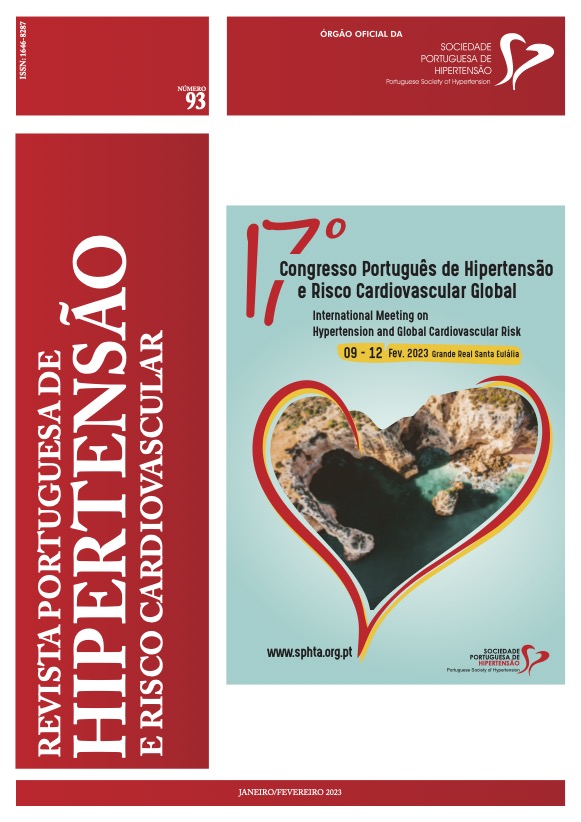PEDIATRIC HYPERTENSION - THE ROLE OF THE GENERAL PRACTITIONER IN HIGHLIGHTING A SILENT DISEASE
DOI:
https://doi.org/10.58043/rphrc.52Keywords:
arterial hypertension, secondary hypertension, pediatrics, parenchymal kidney diseaseAbstract
Blood Pressure (BP) assessment within Primary Health Care (CSP) surveillance consultations results from the recognition of a growing importance of Hypertension (HTN) problematic at a young age. Hypertension is defined by systolic and / or diastolic BP above the 95th percentile (P). Secondary hypertension is more frequent in pre-adolescent children and the main etiology are renal causes. Due to treatable cause of hypertension, early diagnosis and treatment are essential. We present a case of an asymptomatic pre-adolescent (12 years old), who, in the CSP surveillance consultation presented blood pressure values of 120/70 mm Hg (systolic and diastolic TA> 5 mm Hg from P99). The personal background showed episodes of feverish urinary tract infections during the first 3 years of life; from family background, obesity, hypertension and kidney stones are highlighted . Physical examination, besides high value of BP, which was maintained in outpatient control the following days. Renal ultrasound revealed asymmetry, with globose dimensions on right kidney (RD) and smaller dimensions on left kidney (ER), irregular contours and cortical structure irregularities (sequelae of inflammatory processes ). She was referred to Pediatric Nephrology consultation, where complemented the investigation of secondary causes of HTN. The renal scintigram showed ER of reduced dimensions and with marked hypofunction (12.63%), increased dimensions on RD (87.37%) and bilateral cicatricial lesions; serial voiding cystouretrography revealed bilateral grade IV vesicourethral reflux, which was corrected. Started antihypertensive therapy with ramipril, with difficulty in tension control confirmed by ABPM. Currently being followed at Pediatric Nephrology consultation, medicated with ramipril 5 + 5 mg, cholecalciferol and oral iron. Due to treatment resistance, nephrectomy is considered. Parenchymal kidney disease is a frequent cause of child hypertension, whose prognosis depends on early treatment. This show the importance of systematic BP assessment in child health consultations. When identified, the disease must be investigated and adequately treated.Downloads
References
Lurbe E. et al. 2016 European Society of Hypertension guidelines for the management of high blood pressure in children and adolescents. Journal of Hypertension 2016, 34.
Correia A.J.M.. Abordagem da Criança e Adolescentes Hipertensos. Nascer e Crescer 2007, 16(3): 158-167.
Grupo de HTA em Pediatria, Sociedade Portuguesa de Pediatria. Avaliação da Pressão Arterial na criança (Hipertensão arterial em pediatria). 13 de maio de 2015.
Direcção-Geral da Saúde. Programa Nacional de Saúde Infantil e Juvenil. Norma n.o 10/2013 de 31-05- 2013.
Duarte S.G. et al. Estenose da Artéria Renal em Pediatria – a Propósito de um Caso Clínico. Nascer e Crescer 2009, 18(3): 167-70.
Flynn J.T. et al. Clinical Practice Guideline for Screening and Management of High Blood Pressure in Children and Adolescents. Pediatrics 2017, 140(3): e20171904.
Lurbe E. et al. Management of high blood pressure in children and adolescentes: recommendations of the European Society of Hypertension. Journal of Hypertension 2009, 27: 1719-1742
Downloads
Published
How to Cite
Issue
Section
License
Copyright (c) 2023 Daniela Rocha, Maria João Faria, Rita Regadas

This work is licensed under a Creative Commons Attribution 4.0 International License.




